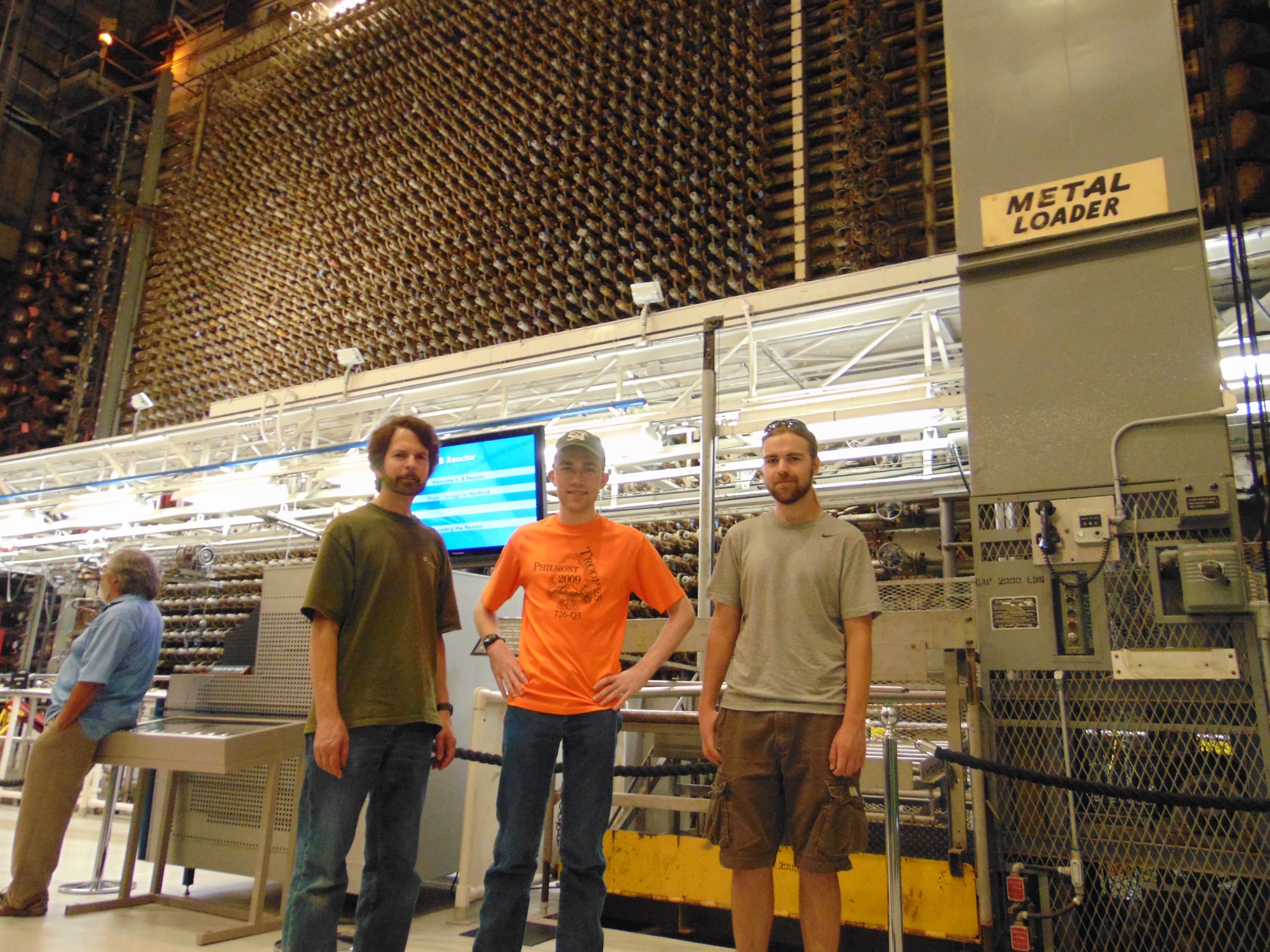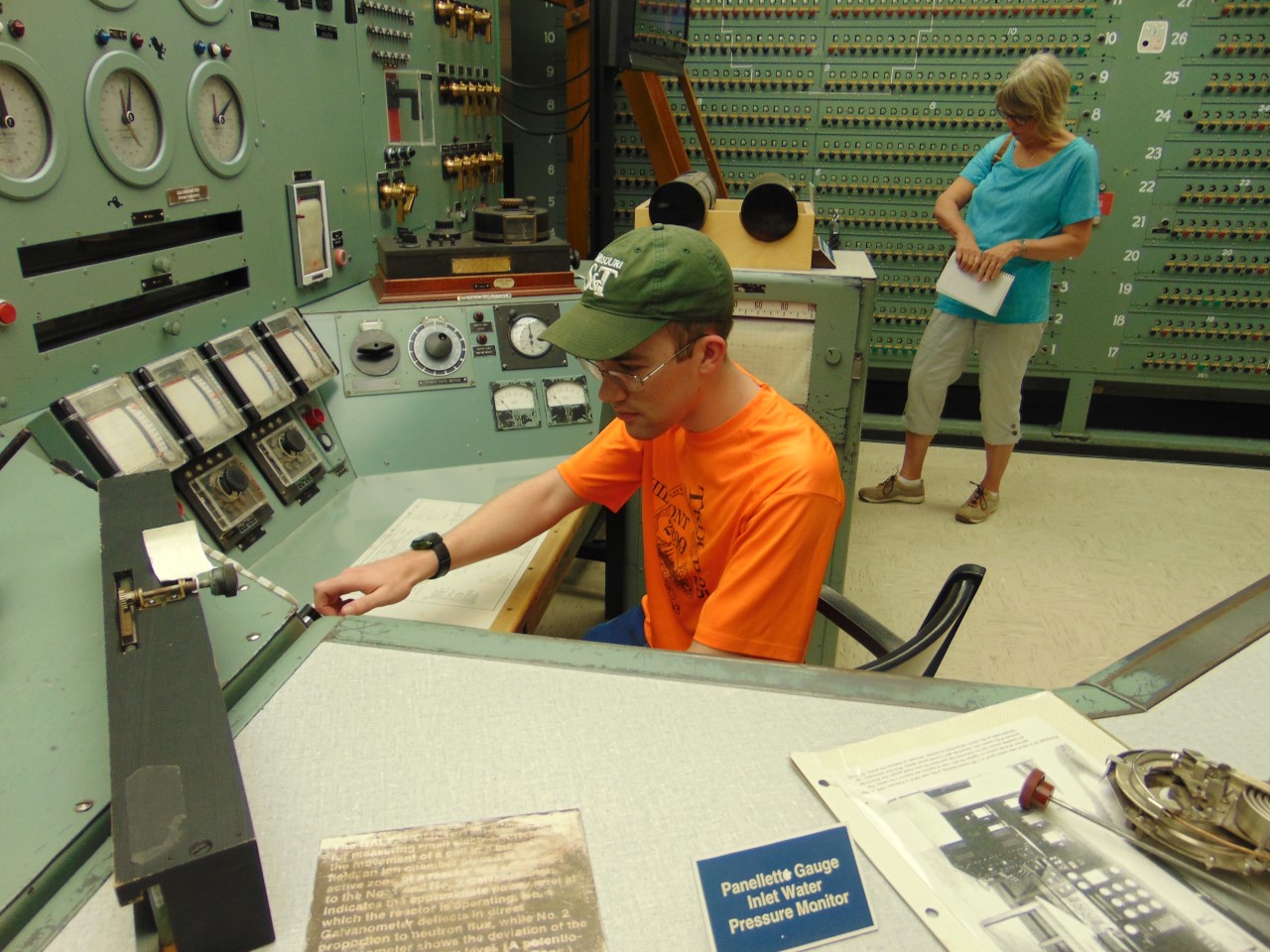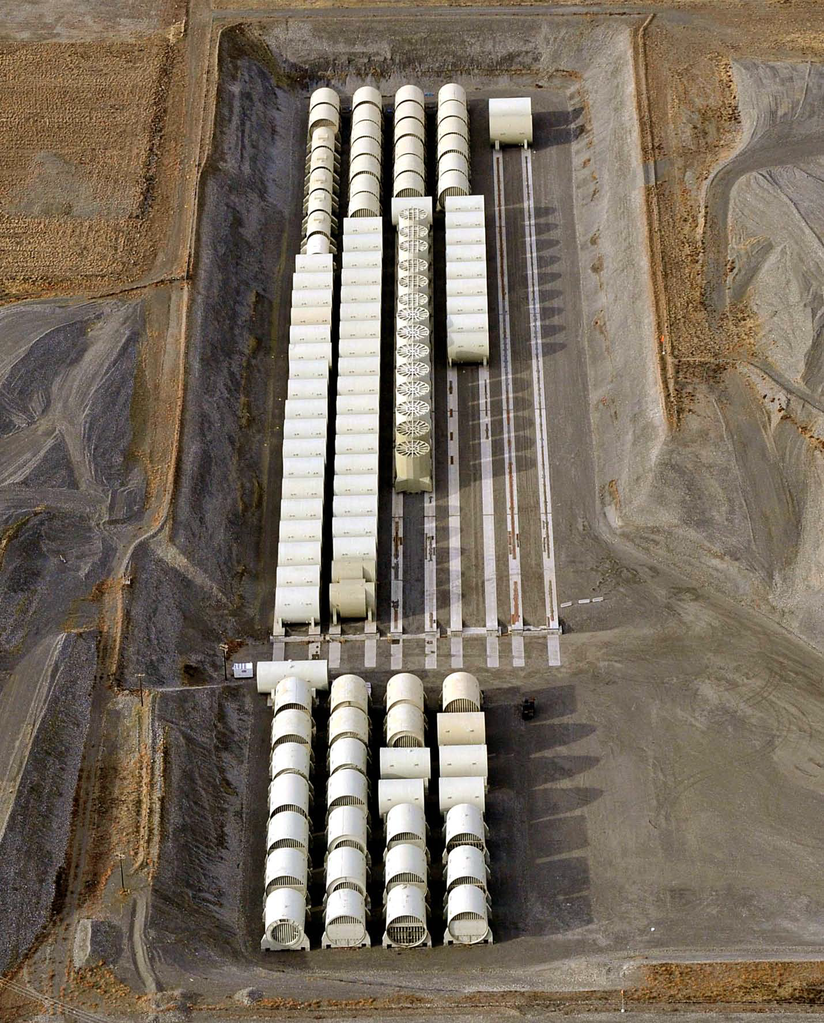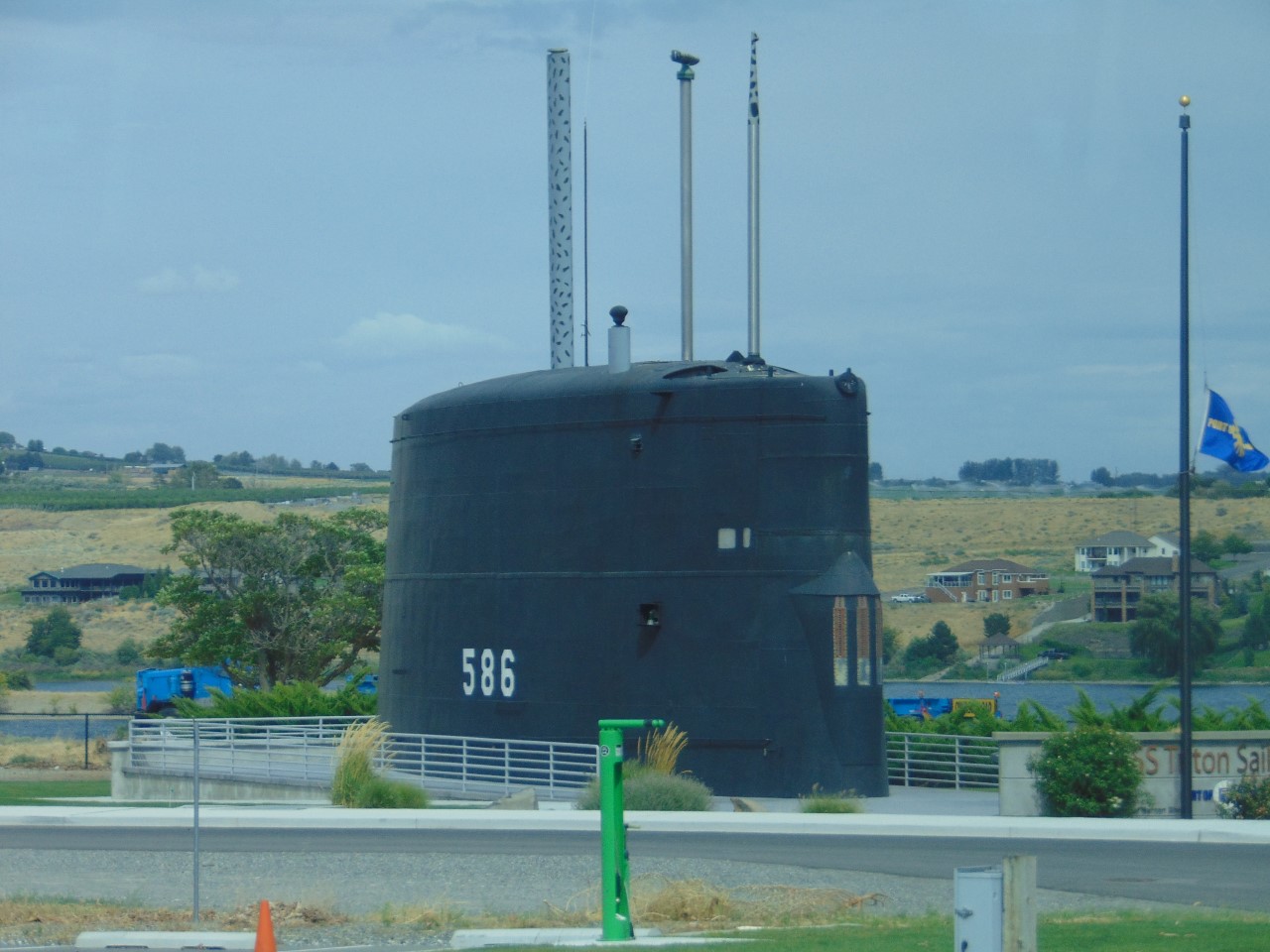The Hanford Site, in southeast Washington State, was one of the fruits of the Manhattan Project. It was chosen because of ready access to hydropower and cooling water from the Columbia River and a large area of land well away from the coasts. These were the necessary conditions for the site that would house the plutonium breeder reactors which produced the vital ingredient in the world's first atomic bomb.

Me with some friends in front of the main face of B Reactor
Hanford's active role in plutonium production continued until 1987, but as the Cold War wound down, the government realized that it was now the largest single contaminated site in the country. Work on environmental remediation began, and continues to this day. As you'd expect, the site is not accessible to the general public, but the various organizations involved (Hanford is the subject of some truly bizarre jurisdictional overlap) run occasional guided tours on certain days over the summer, which require advance ticket reservations. At least at the time I went (summer 2015), there were three major tours: one covering the site as a whole with an emphasis on cleanup, one specifically focusing on the Manhattan Project, and one looking at the history of the site before Leslie Groves and his minions showed up. I was able to go on the first two, which is what I expect most here to be interested in.

Me at the controls of the reactor
The highlight of both tours is the B reactor, where the plutonium used for the Trinity and Fat Man bombs was created. Unlike the eight other reactors at Hanford, it has been preserved as a museum, and a lot of the interior is open for visitors to explore. The coolest part is the reactor face, where the fuel rods were loaded into their channels.1 It's like something out of a movie. There's also the control room, with banks of monitors because it was built in the 1940s, the pumps to cool the whole thing, and all of the support facilities. There were also a number of docents, who were knowledgeable and friendly, a number of smaller artifacts, and good signage.

An aerial view of the reactor pit
Overall, I'd strongly recommend the Manhattan Project/B Reactor tour over the whole-site one. We got longer at the B reactor on the Manhattan Project tour, and more of it was open. The site tour was heavily focused on environmental remediation, which was sort of interesting, but nowhere near as neat as getting to run around an actual nuclear reactor. The only thing I really liked on the whole-site tour that wasn't on the Manhattan Project tour was getting to see the storage site for all of the decommissioned naval reactors. When the Navy retires a nuclear vessel, the reactor compartment is chopped out, barged up the Columbia, and placed in a big pit in the Hanford site. Unfortunately, we only stopped for a few minutes and weren't allowed to take pictures. I would have loved an hour with a couple of reference books even then, and much more so now.

We also got to drive by the sail of USS Triton
Of course, all of this was 5 years ago, and based on their website, it looks like the site tour may no longer be offered, but the Manhattan Project tour should be available when coronavirus has died down. Unfortunately, the way the tickets work makes it hard for people from outside the Northwest to go and visit, but it was really cool to see this piece of nuclear history. I'd recommend it if you get a chance.
1 The really short version is that the heart of B reactor is a giant block of graphite with a bunch of channels in it. Chunks of natural (unenriched) Uranium were loaded into these channels and the graphite moderated their neutrons enough to allow the U238 to become Pu239, the kind you need for a bomb. The fuel had to be changed every couple of weeks, so new fuel elements were inserted from the room you have access to. ⇑

Comments
So, did the two tours fight with each other real bad on tone? I can imagine the enviro-tour easily slipping into "this should never have been built."
Also, to state the obvious, the requirement to not be coastal was to interfere with enemy ability to raid, right?
Between this and the latest fort post, you've covered the two interesting stops of our 8th grade state history trip!
Unfortunately they didn't give us this good of a tour; we never got to see the reactor face. And it definitely wasn't the "environmental remediation tour", because I don't remember anyone jeering "ha! gaaaaaay!"
Will definitely add this to the list next time I'm on that side of the mountains.
The tone wasn't too different between the two. The environmental side was reasonably matter-of-fact, probably because they didn't want fights between people from the People's Republic of Seattle and locals. And the Manhattan Project side was also not particularly triumphalist or anything.
Indeed.
@echo
That sounds way better than what I heard Spokane schools doing.
Oh this is really cool! Too bad I'm on the east coast, but if I ever make it out there I'll be going.
Typo: nuclear reatctor
Since bean has taken several tours he no longer needs to wear a fluorescent shirt... he fluoresces all on his own :-)